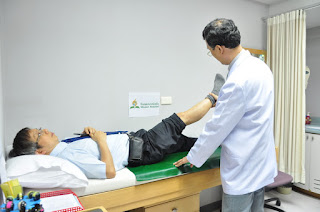An Overview of Hyperbaric Oxygen Therapy for Children With Cerebral Palsy
HBOT (hyperbaric oxygen treatment or hyperbaric prescription) is the medicinal utilization of oxygen at a fixation higher than air weight. Its more conventional uses have included treating decompression infection, (for example, the twists in scuba jumpers), carbon monoxide harming and gas gangrene. As of late, it has been presented as a type of treatment for individuals with cerebral paralysis went for enhancing engine, visual and verbal abilities. And keeping in mind that it presently can't seem to deliver enough definitive outcomes to justify far reaching proposal and utilize, it is absolutely deserving of further thought.
HBOT is managed by having the patient enter an extraordinarily composed chamber where the oxygen content (pneumatic stress) can be physically directed. Hyperbaric chambers are intended for quiet solace and the system is effortless. Patients can spend the 1-2 hour session perusing, tuning in to music or staring at the TV.
Once fixed inside the chamber, the gaseous tension is raised until the point when the patient is breathing 100 unadulterated oxygen. Customary air is just around 20% oxygen. Inside the chamber, the lungs take in approximately three times the ordinary measure of oxygen. The higher admission is accepted to help in the recovery and restoration of harmed or non-utilitarian cells.
HBOT isn't without hazard. Outrageous changes in pneumatic force can bring about harm to the inward ear or aspiratory framework (barotrauma). Oxygen harmfulness, weakness, ear infections, cerebral pains and changes in vision can likewise be experienced amid or soon after HBOT. The level of hazard isn't extraordinary, particularly under qualified supervision.
While HBOT has demonstrated precious in some restorative circumstances, with regards to utilizing it to treat cerebral paralysis, the outcomes have demonstrated conflicting and dubious. Two all around announced examinations proclaimed the strategy to have positive outcomes. The first was a Canadian report amid the late 80's that accumulated 473 youngsters experiencing spastic CP. 230 of the kids were controlled 20 HBOT sessions. A half year later, 75 percent of the "treated" kids were found to show a superior feeling of adjust and a lower rate of spastic writhings. The staying 243 youngsters were known as the "control gathering." They likewise experienced 20 HBOT sessions over a similar timeframe, just at a lower barometrical weight. The costly investigation was censured and rejected in view of their inability to display a genuine fake treatment/control gathering. The second real examination, a recent report by scientists at McGill University, treated 25 kids with CP in a progression of 20 HBOT sessions over a 30-day time span and inferred that 16 of the kids (roughly 67%) showed observable upgrades in muscle spasticity and development.
HBOT is managed by having the patient enter an extraordinarily composed chamber where the oxygen content (pneumatic stress) can be physically directed. Hyperbaric chambers are intended for quiet solace and the system is effortless. Patients can spend the 1-2 hour session perusing, tuning in to music or staring at the TV.
Once fixed inside the chamber, the gaseous tension is raised until the point when the patient is breathing 100 unadulterated oxygen. Customary air is just around 20% oxygen. Inside the chamber, the lungs take in approximately three times the ordinary measure of oxygen. The higher admission is accepted to help in the recovery and restoration of harmed or non-utilitarian cells.
HBOT isn't without hazard. Outrageous changes in pneumatic force can bring about harm to the inward ear or aspiratory framework (barotrauma). Oxygen harmfulness, weakness, ear infections, cerebral pains and changes in vision can likewise be experienced amid or soon after HBOT. The level of hazard isn't extraordinary, particularly under qualified supervision.
While HBOT has demonstrated precious in some restorative circumstances, with regards to utilizing it to treat cerebral paralysis, the outcomes have demonstrated conflicting and dubious. Two all around announced examinations proclaimed the strategy to have positive outcomes. The first was a Canadian report amid the late 80's that accumulated 473 youngsters experiencing spastic CP. 230 of the kids were controlled 20 HBOT sessions. A half year later, 75 percent of the "treated" kids were found to show a superior feeling of adjust and a lower rate of spastic writhings. The staying 243 youngsters were known as the "control gathering." They likewise experienced 20 HBOT sessions over a similar timeframe, just at a lower barometrical weight. The costly investigation was censured and rejected in view of their inability to display a genuine fake treatment/control gathering. The second real examination, a recent report by scientists at McGill University, treated 25 kids with CP in a progression of 20 HBOT sessions over a 30-day time span and inferred that 16 of the kids (roughly 67%) showed observable upgrades in muscle spasticity and development.





No comments